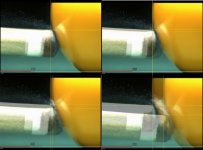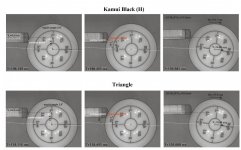This is exactly why I stayed out of this thread as long as I did...
I don't play the appeal to authority or paradigms game...
I will always trust my own experimentation and visualization before I will trust the paradigms or "authority" on understanding reality.
That's not to say I won't listen to what the paradigms are and give them a fair shake, provided they don't conflict with my experimentation and understanding from real world trial and experience.
Many times it ends up being a misunderstanding and we are often describing the same understanding of reality but in different ways. Sometimes there is a fundamental difference in understanding of what is really going on.
Be that as it may, you want to SHOW me the experimentation that metes out the claims, I'll be happy to look at it. You want to try and explain your understanding of what is going on and I'll listen to it.
You want to play bullshit appeal to authority games with me and you can go pound sand.
Jaden
p.s. nothing in my description of what was going on required that the GRIPPING force be separate from the primary force moving the ball forward, it was only the cause of the opposing to the force being exerted on the shaft side action of the shaft and therefore the cause of the action that causes the sidespin that my description changes.
Not necessarily. When struck at 2/5'ths of its radius off-center, its surface speed from spin is equal to its forward speed. At 1/2 radius (the miscue limit), its surface speed can be slightly greater than its forward speed.
Anytime it's struck off-center, spin is created simultaneously with forward motion. This happens from the very first moment the tip comes into contact with the cueball. Every ounce of forward force generates not only translational velocity, but a concomitant amount of spin, depending on the tip offset. Spin is not a delayed reaction. Jaden, this is very, very basic physics.
Take these words by Dr. Dave to heart, if you would:
"Also, the grabbing force of the tip is not separate from the primary force ... it is necessary to help create the primary force pushing the CB forward."
Jim
I don't play the appeal to authority or paradigms game...
I will always trust my own experimentation and visualization before I will trust the paradigms or "authority" on understanding reality.
That's not to say I won't listen to what the paradigms are and give them a fair shake, provided they don't conflict with my experimentation and understanding from real world trial and experience.
Many times it ends up being a misunderstanding and we are often describing the same understanding of reality but in different ways. Sometimes there is a fundamental difference in understanding of what is really going on.
Be that as it may, you want to SHOW me the experimentation that metes out the claims, I'll be happy to look at it. You want to try and explain your understanding of what is going on and I'll listen to it.
You want to play bullshit appeal to authority games with me and you can go pound sand.
Jaden
p.s. nothing in my description of what was going on required that the GRIPPING force be separate from the primary force moving the ball forward, it was only the cause of the opposing to the force being exerted on the shaft side action of the shaft and therefore the cause of the action that causes the sidespin that my description changes.
Last edited:

